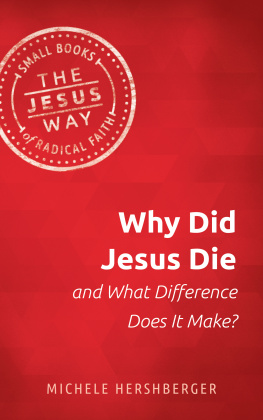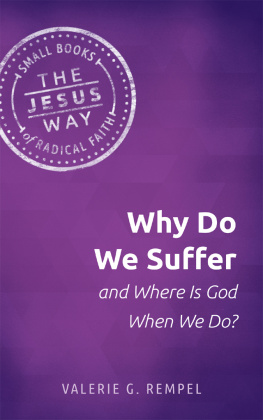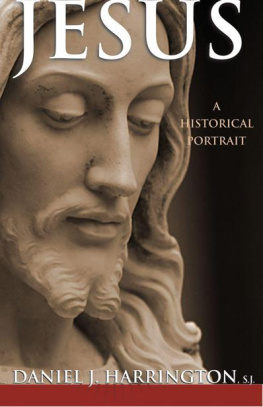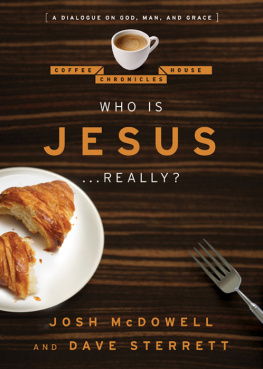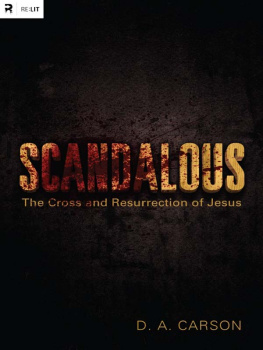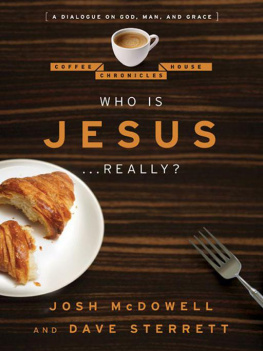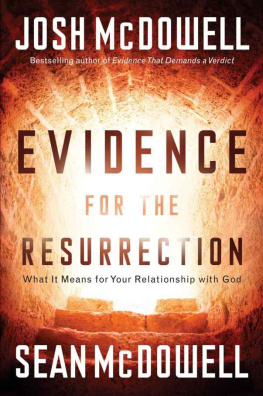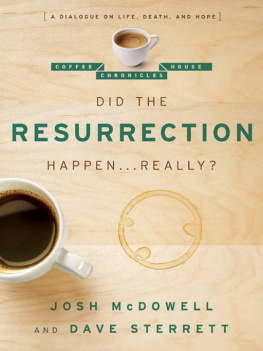Contents



Herald Press
PO Box 866, Harrisonburg, Virginia 22803
www.HeraldPress.com
Library of Congress Cataloging-in-Publication Data
Names: Hershberger, Michele, 1960- author.
Title: Why did Jesus die and what difference does it make? / Michele
Hershberger.
Description: Harrisonburg : Herald Press, 2019. | Series: The Jesus way
series | Includes bibliographical references. | Summary: Why did Jesus
die? And how does his death change us and our world? The author delves
into the meaning of the cross by sifting through Scripture and the life
of Christ; teaches theological concepts like sin, salvation, and
atonement. Accessible Jesus-centered theology from an Anabaptist
perspective-- Provided by publisher.
Identifiers: LCCN 2019023919 | ISBN 9781513805658 (paperback) | ISBN
9781513806136 (ebook)
Subjects: LCSH: Atonement. | Jesus Christ--Crucifixion.
Classification: LCC BT265.3 .H47 2019 | DDC 232/.3--dc23
LC record available at https://lccn.loc.gov/2019023919
WHY DID JESUS DIE AND WHAT DIFFERENCE DOES IT MAKE?
2019 by Herald Press, Harrisonburg, Virginia 22803. 800-245-7894.
All rights reserved.
Library of Congress Control Number: 2019023919
International Standard Book Number: 978-1-5138-0565-8 (paperback);
978-1-5138-0613-6 (ebook)
Printed in United States of America
Cover and interior design by Reuben Graham
All rights reserved. This publication may not be reproduced, stored in a retrieval system, or transmitted in whole or in part, in any form, by any means, electronic, mechanical, photocopying, recording or otherwise without prior permission of the copyright owners.
Unless otherwise noted, Scripture text is quoted, with permission, from the New Revised Standard Version , 1989, Division of Christian Education of the National Council of Churches of Christ in the United States of America.
23 22 21 20 1910 9 8 7 6 5 4 3 2 1

Introduction to The Jesus Way Series from Herald Press
T he Jesus Way is good news for all people, of all times, in all places. Jesus Christ is before all things, and in him all things hold together; in him all the fullness of God was pleased to dwell (Colossians 1:17, 19). The Jesus Way happens when Gods will is done on earth as it is in heaven.
But what does it mean to walk the Jesus Way? How can we who claim the name of Christ reflect the image of God in the twenty-first century? What does it mean to live out and proclaim the good news of reconciliation in Christ?
The Jesus Way: Small Books of Radical Faith offers concise, practical theology that helps readers encounter big questions about Gods work in the world. Grounded in a Christ-centered reading of Scripture and a commitment to reconciliation, the series aims to enliven the service and embolden the witness of people who follow Jesus. The volumes in the series are written by a diverse community of internationally renowned pastors, scholars, and practitioners committed to the way of Jesus.
The Jesus Way series is rooted in Anabaptism, a Christian tradition that prioritizes following Jesus, loving enemies, and creating faithful communities. During the Protestant Reformation of the 1500s, early Anabaptists who began meeting for worship emphasized discipleship in addition to belief, baptized adults instead of infants, and pledged their allegiance to God over loyalty to the state. Early Anabaptists were martyred for their radical faith, and they went to their deaths without violently resisting their accusers.
Today more than two million Anabaptist Christians worship in more than one hundred countries around the globe. They include Mennonites, Amish, Brethren in Christ, and Hutterites. Many other Christians committed to Anabaptist beliefs and practices remain in church communities in other traditions.
Following Jesus means turning from sin, renouncing violence, seeking justice, believing in the reconciling power of God, and living in the power of the Holy Spirit. The Jesus Way liberates us from conformity to the world and heals broken places. It shines light on evil and restores all things.
Join Christ-followers around the world as we seek the Jesus Way.
Introduction
W alking home from work one day, I saw a bright pink piece of paper stuck between my front door and the trim. It looked like a little flag, a sign of hope waiting for me on my front porch. Maybe it was a flyer for a neighbors party, or a sale bill, or a note from a friend?
As I walked onto my front porch, I saw that it was a gospel tract. The idea that someone had tucked into my door a message about Jesus, the cross, and my eternal destination filled me with mixed emotions. On one hand, Im glad that people care enough about me to walk onto my front porch to share with me something about God. On the other hand, can eight tiny pages, complete with graphics and four to five Bible verses, sum up what it means to be a Christian? It seems inadequate. The Bible can seem overwhelming to the new reader, but can a tract sum up the work of Jesus?
What is God like, according to this tract? The pink pages showed a big cross that bridged sinful humanity and a holy God. Somehow the death of Jesus created the only way for me to get to God. Jesus died on the cross to save us from our sins, the booklet said. As a Christian and a Bible professor, I agree with that statement. The question remains, How?
If a tract and a warm conversation can help people find a church community and begin a relationship with Jesus, then Im supportive of these efforts in every way. But what if those who left that tract on my porch were asking only one of many questions? What if there are other pressing issues besides my eternal destiny? What if Jesus wants more than my accepting him as my personal Savior?
The tract on my porch was about getting saved. While this book is not about salvation per se, salvation is connected to Jesus and his work, particularly what happened when Jesus died on the cross. And that questionWhat is the meaning of the work of Christ? is the topic of this book. We call the work of Christ atonement , and many times we answer this question in ways that involve both the cross and getting saved. Atonement comes from the term at-one-ment , or the reality of being one with God. Atonement theories seek to describe what this reality means and how we achieve it. Views of the atonement seek to give biblical reasons why Jesus was crucified on a cross, how the rest of the life of Jesus is connected to that event, and what all this says about who God is.
The central question of this book is, What does the death of Jesus mean, and how does that death affect individuals, communities, and the whole cosmos? This question is of utmost importance. We long to become one with God, and we struggle to understand how Jesus being executed by Roman authorities more than two thousand years ago helps us do that.
Our view of the atonement functions like a stone skipped on the water; it has ripple effects over the entire theological pond. So its important to ask many questions and delve deeply into Scripture. What is the character of God? Is the character of God consistent with the life, teachings, death, and resurrection of Jesus? Why did Jesus come to earth? Is there saving importance to the life, teachings, and miracles of Jesus? How does the cross work to save us? What does it mean to be saved? How does atonement work at a corporate level as well as with individuals? How is the cross part of Gods intention for the whole cosmos? How does our view on atonement influence our sense of right and wrong? How do the various scriptural explanations for the death of Jesus work together?

